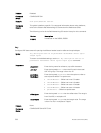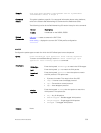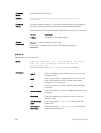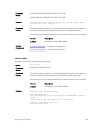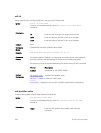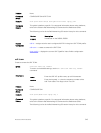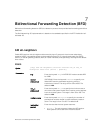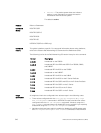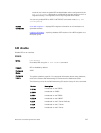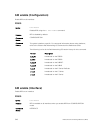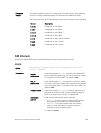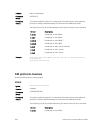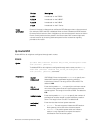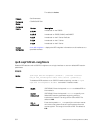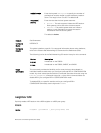• Passive — The passive system does not initiate a
session. It only responds to a request for session
initialization from the active system.
The default is active.
Defaults Refer to Parameters.
Command
Modes
ROUTER OSPF
ROUTER OSPFv3
ROUTER BGP
ROUTER ISIS
INTERFACE (BFD for VRRP only)
Command
History
This guide is platform-specific. For command information about other platforms,
refer to the relevant Dell Networking OS Command Line Reference Guide.
The following is a list of the Dell Networking OS version history for this command.
Version Description
9.2(1.0) Introduced on the Z9500.
9.2.(0.0) Introduced BFD for VRRP and OSPFv3 on Z9000, S4810,
and S4820T.
9.0.0.0 Introduced BFD for BGP on the Z9000.
8.3.19.0 Introduced on the S4820T.
8.3.8.0 Introduced BFD for BGP on the S4810.
8.4.1.3 Introduced BFD for BGP on the E-Series ExaScale.
8.2.1.0 Introduced BFD for OSPF and ISIS on the E-Series ExaScale.
7.6.1.0 Introduced BFD for OSPF on the C-Series.
7.5.1.0 Introduced BFD for ISIS on the E-Series.
7.4.1.0 Introduced BFD for OSPF on the E-Series.
Usage
Information
All neighbors inherit the configured timer values except in the following cases:
• Timer values configured with the isis bfd all-neighbors or ip ospf
bfd all-neighbors commands in INTERFACE mode override timer values
configured with the bfd all-neighbors command. Likewise, using the no
bfd neighbor
command does not disable BFD on an interface if you explicitly
enable BFD using the isis bfd all-neighbors command.
• Neighbors that have been explicitly enabled or disabled for a BFD session with
the bfd neighbor or neighbor bfd disable commands in ROUTER BGP
346
Bidirectional Forwarding Detection (BFD)



